Uses of Rectifier - Applications, Principal, FAQs
A rectifier is an electronic device that converts alternating current (AC) into direct current (DC). It can be made using vacuum tubes, solid-state diodes, or modern semiconductor switches. Since most household and industrial supply systems provide AC power, a rectifier is essential for operating devices that require DC such as laptops, televisions, battery chargers, LED lights, and many power tools.
This Story also Contains
- What is a Rectifier ?
- What is Rectification ?
- Types of Rectifiers
- Applications and Uses of Rectifier
- Principal of Rectifier
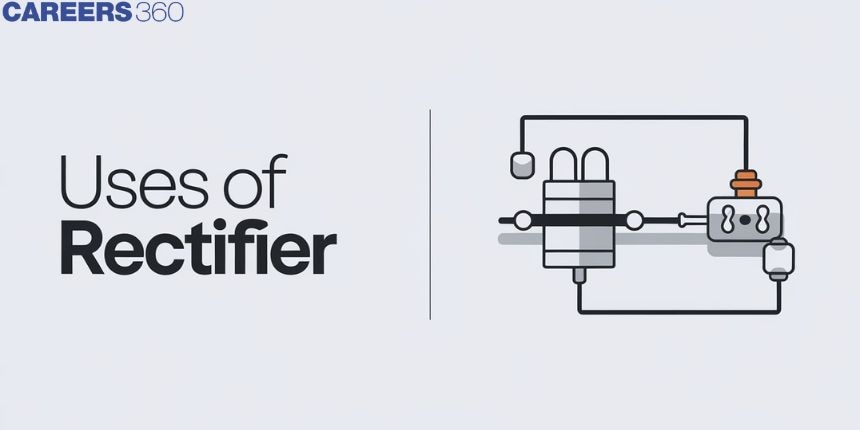
Also read -
What is a Rectifier ?
A rectifier changes the back-and-forth flow of AC into the one-direction flow of DC. This is important because many electronic devices (like mobile chargers, radios, and TVs) work only on DC.
A rectifier is analogous to a one-way valve that permits an electrical current to flow in just one direction. The symbol of Rectifier is shown in fig1.0
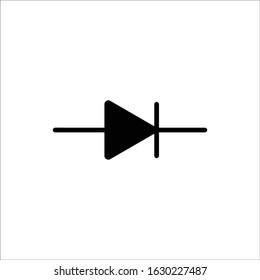
What is Rectification ?
The process of converting AC power into DC power is called rectification.
In AC, current changes direction periodically, whereas DC flows only in one direction. Rectification converts this bidirectional flow into a unidirectional flow.

The method of converting AC current to DC current is understood as rectification. Rectification is the process of transforming bidirectional current flow to unidirectional current flow. The method is of important importance in many areas of circuit design, including radio communication and AC to DC power conversion.
Rectifiers are widely used in:
- Power supplies
- Battery charging circuits
- Radio communication
- Electronic devices
- Motor drives
- Control systems
There are mainly three types of rectifiers:
- Half-Wave Rectifier
- Full-Wave Rectifier
- Bridge Rectifier
Types of Rectifiers
1. Half-Wave Rectifier
- Converts only one half of the AC input (either positive or negative).
- Simple but inefficient because half of the input is wasted.
2. Full-Wave Rectifier
- Converts both halves of the AC input.
- Gives more output and is more efficient than half-wave rectifier.
3. Bridge Rectifier
- Uses four diodes arranged in a bridge structure.
- Converts entire AC waveform into DC .
- Most commonly used because it provides higher efficiency and works without a center-tapped transformer.
Applications and Uses of Rectifier
Rectifiers are extremely important because almost all electronic devices operate on DC power.
1. Powering Electrical Appliances
Every modern device - phones, laptops, LED TVs, routers, music systems - uses a rectifier inside its power adapter to convert AC to DC .
2. Used with Transformers
Half-wave or full-wave rectifiers are used with step-up or step-down transformers to obtain the required DC voltage.
3. Soldering and Welding
- Half-wave rectifiers are used in soldering tools and mosquito repellents.
- Bridge rectifiers are used in arc welding machines to supply stable DC current.
4. Radio and Communication Systems
Half-wave rectifiers work as detectors in AM radio to extract audio signals.
5. Pulse and Firing Circuits
Rectifiers help generate pulses in timing circuits and triggering systems.
6. Modulation and Demodulation
Full-wave rectifiers are used to demodulate AM signals in communication circuits.
7. Voltage Multipliers
Rectifiers are used in circuits that need high DC voltage from small AC input.
Also Read:
- NCERT Solutions for Class 12 Physics Chapter 14 Semiconductor Electronics: Materials, Devices and
Simple Circuits - NCERT Exemplar Class 12 Physics Solutions Chapter 14 Semiconductor Electronics: Materials, Devices and
Simple Circuits - NCERT notes Class 12 Physics Chapter 14 Semiconductor Electronics: Materials, Devices and Simple
Circuits
Principal of Rectifier
Rectifier converts AC → DC.
A rectifier will produce a wave that's unidirectional, like:
Half-Wave Rectifier Without Smoothing Capacitor:
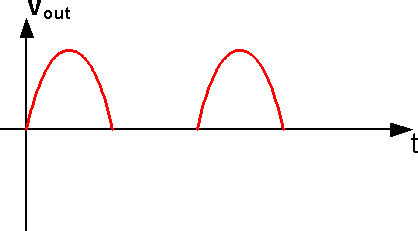
Half-Wave Rectifier without Smoothing Capacitor:
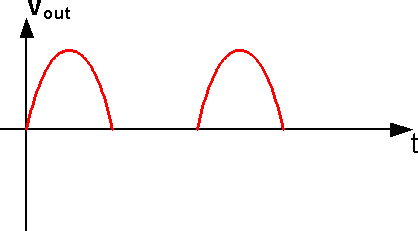
Full-Wave Rectifier with Smoothing Capacitor:
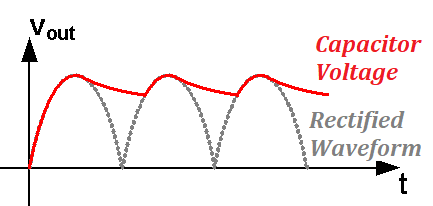
Fully rectified without ripple:
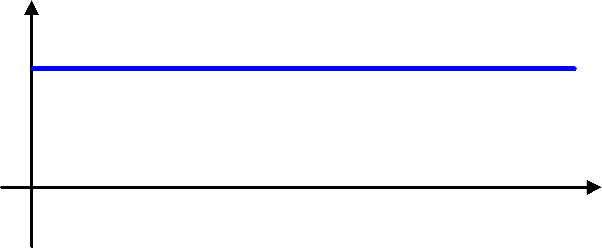
Rectifiers use diodes to form the present only pass in one direction (Diode has this feature, allowing current to flow only in one direction).
Capacitors are used with diodes to assist in smoothing and converting the pulsating DC to somehow steady DC with a coffee ripple.
A very simple Half-Wave diode without smoothing capacitor:
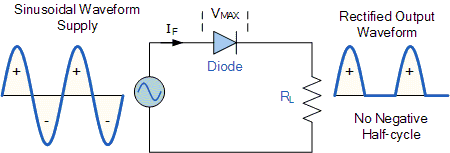
In the +ve cycle of the AC, the diode conducts and therefore the output is that the same because the input.
In the -ve cycle of the AC, the diode doesn't conduct then the voltage is zero across the load resistor, and since there's no current flowing then V=RL×0=0.
The half-wave rectifier actually may be a simple one. There are other types that attempt to maintain the clipped part (full-wave).
Examples:
The best example of rectifier that's utilized in our lifestyle is within the mobile charger. A mobile can only be charged efficiently if a continuing, uninterrupted voltage supply is being provided thereto .This can be done employing a rectifier within the circuit of the phone charger.
Here is that the phone charging circuit, which is essentially an AC to DC convertor.
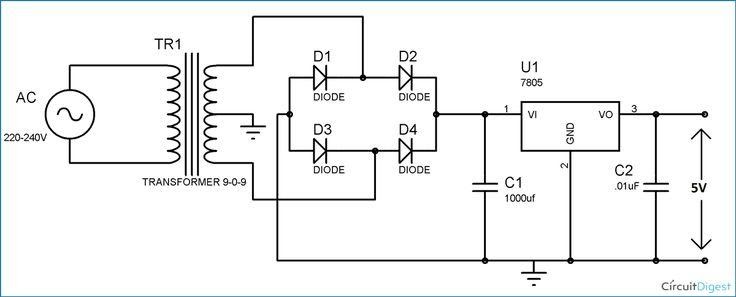
The bridge like circuit you see within the diagram at the input side is that the ‘bridge rectifier’ used for the aim.
Thus, during this way rectifier are often utilized in any application where AC input has got to be converted to DC.
Also check-
- NCERT Exemplar Class 11th Physics Solutions
- NCERT Exemplar Class 12th Physics Solutions
- NCERT Exemplar Solutions for All Subjects
NCERT Physics Notes:
Frequently Asked Questions (FAQs)
The best example of a rectifier in everyday life is a mobile phone charger.
It takes AC from the power socket and converts it into DC so the phone battery can charge safely.
Other examples:
Laptop chargers
LED drivers
TV power supplies
Battery chargers
The main types of rectifiers are:
Half-Wave Rectifier – Converts only one half-cycle of AC into DC.
Full-Wave Rectifier – Converts both half-cycles of AC into DC.
Bridge Rectifier – Uses four diodes and is the most efficient; converts the full AC waveform into DC.
A rectifier works on the principle of a diode, which allows electric current to flow only in one direction and blocks it in the opposite direction.
This property of a diode converts the bidirectional AC into a unidirectional DC.
A rectifier is used to convert AC (Alternating Current) into DC (Direct Current).
Its main uses are:
Powering electronic devices like mobiles, laptops, and televisions
Charging batteries
Radio signal detection (AM radio)
Soldering and welding equipment
Motor drives and control circuits
Power supplies in almost all electronic gadgets
Converting AC to DC in adapters, chargers, and SMPS
The ripple content of the ac power superimposing the mean of the dc voltage is reduced greatly.
The use of a half-wave rectifier can help us achieve the specified dc voltage by employing step-down or step-up transformers. Full-wave rectifiers are for strenghthning up the motor and led, which get works on DC voltage.
Industrial Rectifiers are wont to convert AC power to DC power for several different applications and utilise silicon diodes for uncontrolled applications and thyristors for controlled.
A single diode can transmute AC power into an intermittent DC flow, but a bridge rectifier uses 4 diodes to reverse the direction of each side of the AC pulse. With a bridge rectifier, the DC still fluctuate from 0 to a peak value, but it does not cut out half the time.
The power supply diagram clearly accuratley that a filter circuit is required after the rectifier circuit. A rectifier helps in converting a pulsating AC to DC, which flows only in one direction.